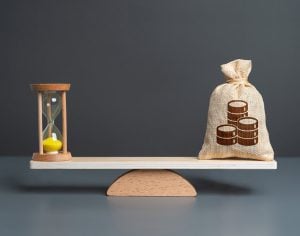In today’s world, shoppers have access to a plethora of shopping options at the click of a mouse. Therefore, it can be increasingly difficult for start-ups and small businesses to stand out above the din: how do you offer a product or a service that’s not already available and provide a customer experience that’s second to none? And all of this needs to be done on a budget. It’s not an easy ask.
Something SMEs often forget is the value of tailoring the customer journey. This can help drive brand loyalty, says Damian Hanson, co-founder and CEO of One iota, a technology company. “We all have less loyalty because of the role that technology is playing in the market place. This means retailers have to be very focused on usability and the user experience to make sure that shopping with them is very seamless,” warns Hanson, who fears that untapped technology will lead to a loss of sales to market leaders.
However, this does not mean the incumbent always has the upper hand, Hanson adds. “Smaller retailers have the ability to take on some of the largest retailers in the country. Especially for online only, as there are no limits with the technology to compete.”
Navigation is the most obvious place to start: customers are looking for a clear path through the website, from the landing page to the moment they find what they’re looking for and then on to checkout. When it comes to paying for products, speed is of the essence: options like one- or two-click purchasing for returning customers, or guest checkout for new ones, are the most convenient for users. Ultimately, the rule is that less is more. What’s the shortest amount of time necessary to convert a sale?
The customer journey does not end with the completed sale; it extends to the collection or delivery of goods purchased and any problems that the consumer may face being solved by interacting with the customer. “Being able to give customers choice and give them the services that they desire, being able to see inventory and being able to do click and collect service and the ability to return in store. Those are all steps that are part of the user journey: the connection between purchase, going through the website and then making the purchase, having the goods delivered at a place of choice or where the customer picks them up and being able to return the order,” says Jonh Pincott, MD Europe at Shopatron.
Businesses of all kinds can extend their traditional customer journey to deliver the best customer service possible to customers after that final transaction is complete; traditional bricks and mortar retailers can offer a click and collect service whilst online businesses can offer an efficient delivery service of both physical goods and online products or services. A large element of the customer journey is through their interaction with a business, which as we all know, doesn’t end the moment you enter your bank details.
Despite the constant evolution of technology, the telephone continues to be a trusty communication tool between businesses and consumers. Recent research by Tollring studied the impact of missed calls from consumers on a FTSE 100 company with 900 branches. Over the course of a year, 2 million calls went unanswered, which lead to a potential loss of revenue estimated as more than £80m, based on the average sales order value. But it’s not just potential sales that are at stake: a missed call is also a missed opportunity to give customers a positive experience of your brand.
What’s more, call data can offer a wealth of information that can help companies optimise the customer experience. Most businesses, including SMEs, will have CRM systems and call recording systems. It might be worth considering acquiring a tool that can help analyse the data behind those all-important customer calls; a computer program could monitor the calls coming in, analysing who has called and how many times. This data can then help businesses get a more accurate picture of the service they’re providing to customers – and identify where any gaps might be.

There’s no room for complacency, explains Tony Martino, MD of Tollring. “Businesses need to understand that customers are really fickle these days. You need to offer a really good customer experience otherwise you won’t survive in this world.”
The increasing pace at which customers want to make purchases has been good news for One iota, which has built a business on creating solutions for retailers to serve customers quickly and efficiently. Its technology involves a built-in scanner on the rear and, as it’s portable, can a check a customer out wherever they are in the store. Not only does this help banish long queues at till points, but it also bolsters customer satisfaction.
Linked to this, many forward-thinking retailers offer e-recipets these days. In Apple stores, for example, customers can have the particulars of the sale emailed to them, in addition to an optional paper receipt handed out in store. This can save customers from carrying unnecessary paper and is also eco-friendly. What’s not to like?
And it’s not just retailers getting in on the act when it comes to innovations in customer experience. Restaurants are increasingly looking to technology to help provide seamless service to diners. It’s hard to imagine life without services like JustEat, which enables hungry customers to order from local takeaways online but, on the bricks-and-mortar side, one restaurant chain in particular is leading the way. Hummus Bros saw customers’ frustration in waiting in lengthy queues during the lunchtime and dinnertime rush. Its Mediterranean menu often needs explaining to customers and this leaves regulars waiting in line.
“We’ve got some customers in particular and they know that the queue starts to build at 12:10 so they set out to make sure that they are there before then. But sometimes a meeting over-runs and they know they can’t come because by the time they walk here, plus the queue, plus the walk back to the office, it’s too long,” says co-founder Christian Mousyet.
So Hummus Bros decided to do something about it. In order to cater to customers in a more personal way, Mousyet and his team launched a mobile app which enables customers to pre-order, cutting waiting times. “Customers really love it. Now they can come at any time and skip the queue. It makes a huge difference because they know that the most they’ll wait is five minutes,” says Mousyet.
Customers can also pay via the app which means if they forget their wallet it’s no biggie. “More and more people walk around without cash. One thing they don’t forget is their phone, so at least they know that if they have forgetten their wallet they can place their order and still collect their food. This simplifies it for the customer and really reduces the varries for them to order from us,” adds Mousyet.
The next step for Hummus Bros may be self-checkout. “Anything you can do to simplify that journey and make it agreeable for the customer is paramount and that is what we invest most of our time working on now.”
As a start-up or SME, it may not always be possible to offer the latest and most innovative new technologies as they often come with a hefty price tag. But going back to the basics of customer service can help keep customers loyal. Make sure your website is easy to navigate and any interaction with your business offline is friendly yet professional. The result will be a happy customer – and happy customers mean a healthy bottom line. ![]()
Share via:








































